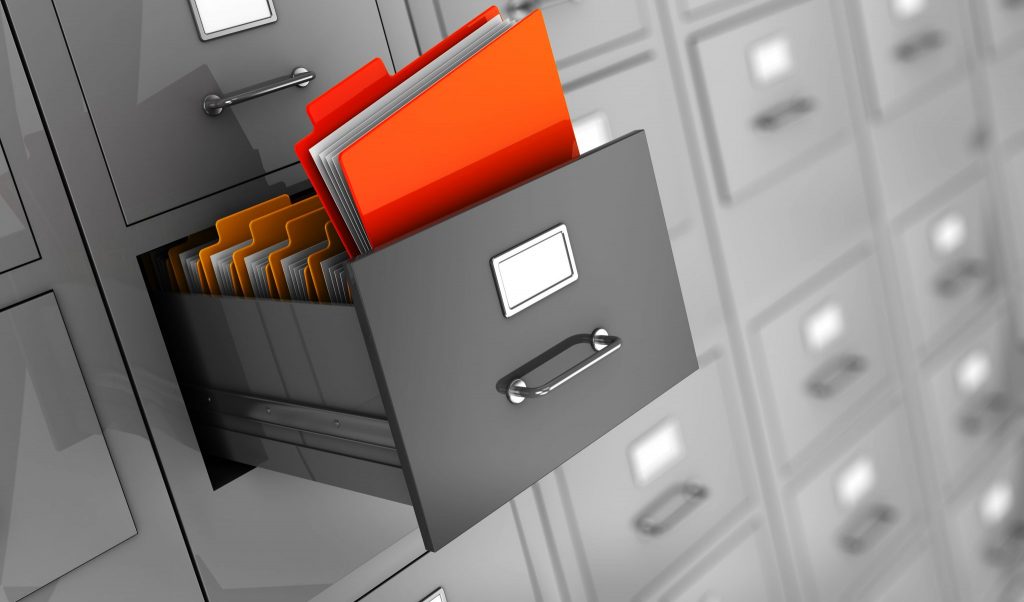If you would like to read the other parts in this article series please go to:
- Exchange Archiving: On-Premises vs Cloud-Based (Part 2)
- Exchange Archiving: On-Premises vs Cloud-Based (Part 3)
- Exchange Archiving: On-Premises vs Cloud-Based (Part 4)
- Exchange Archiving: On-Premises vs Cloud-Based (Part 5)
Introduction
The archiving topic is of paramount importance for any Exchange Administrator, because it deals with a lot of the concerns of any modern organization, whether because compliance is involved, the volume of data occupied by email is growing exponentially (either inside the Exchange databases or in PST files throughout the file shares) or even because it can be seen as some sort of replacement for backups.
In my experience, I’ve seen organizations seeking some kind of archiving solution, sometimes because it’s important for their objectives and obligations, but other times just because it’s trendy and that 3rd party and very expensive solution would look very good in any IT portfolio. I’m being a little bit ironic, of course, but my advice for anyone interested in archiving is to pause for a while, breathe, and then determine what goals are supposed to be attained and what pains should be overcome:
- Storage space shortage?
- Legal obligations?
- Performance issues?
- Operation expenses reduction?
- User satisfaction?
- All of the above?
There are very good 3rd party archiving solutions in the market that work with Exchange Server, but the purpose of this article is not to review them, instead I will focus on the solutions provided by Microsoft, either natively with Exchange Server 2013 or through cloud services, such as Office 365.
A Brief History of Archiving
Microsoft has been providing alternatives to traditional 3rd party archiving software since Exchange Server 2007, when Messaging Records Management was introduced. It was also with this version that Microsoft started providing guidance on how to implement large mailboxes, by publishing a white paper on the subject.

Figure 1: Exchange 2007 Messaging Records Management explained on TechNet
Then, Exchange Server 2010 introduced Personal Archives (In-Place Archiving in Exchange Server 2013), an on-premises solution to the PST files problem. Meanwhile, on the cloud front, Microsoft had been working on Exchange Online Archiving (firstly known as Exchange Hosted Archive), a cloud based solution similar to the on-premises Personal Archiving/In-Place Archiving, provided by Exchange 2010/2013, but with unlimited storage space and infinite retention period.
So, let’s recap on what are the mechanisms provided by Exchange Server 2013 and Office 365 to address the above mentioned customer pains:
- Large Mailboxes (on-premises / cloud): Earlier versions of Exchange did not scale well enough to accommodate the ever increasing mailbox sizes. By the time Exchange Server 2007 was launched, a large mailbox was defined as having more than 1 GB of available storage. Nowadays Office 365 provides 50 GB and on-premises Exchange Server 2013 is perfectible capable of matching that quota.
- In-Place Archiving (on-premises): In-Place Archive is a specialized mailbox associated with a user’s primary mailbox. It appears alongside the primary mailbox folders in Outlook or Outlook Web App, giving users direct access to archived email in the same way as non-archived email. Unlike Outlook Data Files (.pst) that are only accessible on the computer where the file is saved, items in the Personal Archive are available in Outlook from any computer that you use or in Outlook Web App (OWA). In-Place Archiving is a premium feature and requires an Exchange Enterprise client access license (CAL).
- Exchange Online Archiving (cloud): Microsoft Exchange Online Archiving is a Microsoft Office 365 cloud-based, enterprise-class archiving solution for organizations that have deployed Microsoft Exchange Server 2013, Microsoft Exchange Server 2010 (SP2 and later), or subscribe to certain Exchange Online or Office 365 plans. Exchange Online Archiving assists these organizations with their archiving, compliance, regulatory, and eDiscovery challenges while simplifying on-premises infrastructure, and thereby reducing costs and easing IT burdens.
- Retention Policies (on-premises / cloud): Retention polices can be used to apply settings to specific items, conversations or folders in a mailbox. Policies are configured by the Exchange administrator and are displayed in Outlook inside each email along with a header stating the applied policy and delete date. There are two types of policies available to users: delete policies and archive policies. Both types of policies can be combined on the same item or folder. For example, an email can be tagged so that it is automatically moved to the In-Place Archive in 15 days and deleted within 45 days. Administrators can also use archive policies to control when messages are automatically moved from a primary mailbox to the In-Place Archive.
- In-Place Hold (on-premises / cloud): In-Place Hold enables the preservation of a user’s edited and deleted mailbox items (email, appointments, tasks, etc.) from both their primary mailbox and In-Place Archive. In-Place Hold can be set on individual mailboxes or across the enterprise. They can also be set for a specific time period (for example, place a mailbox on hold for 90 days). In addition, In-Place Hold includes an option that automatically alerts users through Outlook that a hold has been placed on their mailbox.
- eDiscovery (on-premises / cloud): eDiscovery enables search of mailbox items, including email, attachments, calendar appointments, tasks and contacts. Exchange also indexes a long list of attachment types as well as Information Rights Management-protected content. eDiscovery can work simultaneously across primary mailboxes, In-Place Archives and recovered items with the web-based Exchange Administration Center.
This article will not cover the provisioning of large mailboxes (if you’re interested, please read Exchange 2010 Large Mailbox Vision Whitepaper), but it will focus instead on the other listed features.
Benefits: On-Premises vs Cloud
Providing virtual unlimited space for email storage has many benefits, being the first having satisfied users that don’t complain all the time.
Let’s quickly highlight the benefits of the different options listed in the previous section.
LARGE MAILBOXES
- No learning curve, users will just have more space for storage, nothing changes from what they are used to.
- All of your day-to-day items are immediately accessible. Since all the mailbox content resides on Exchange Server, you have access to all of your items from any computer that you use with Outlook or Outlook Web App. Previous archive solutions using an Outlook Data File (.pst) restricted access to only the computer where the file was saved.
- No licensing costs: there’s no additional Exchange CAL requirements.
- Small investment in hardware: since Exchange support cheap SATA disks, there’s no need to buy expensive storage.
IN-PLACE ARCHIVING (ON-PREMISES)
- Reduced learning curve, users can employ the same skills they use today to interact with archived email. Working with the personal online archive is pretty much like using an Outlook Data File (.pst).
- Like with large mailboxes, all the content from both mailboxes (primary and archive) is always available and accessible from Outlook or Outlook Web App. You should be aware that there’s no offline access to the archive mailbox.
- Different data protection policies can be applied to the primary mailbox and the archive mailbox. Because you can separate the mailboxes into different databases, the backup frequency can be lower on the archive database.
- Small investment in hardware: the required storage space for the archive database can be obtained from cheap SATA disks.
- Archiving and retention policies can be managed centrally. Messages from your Exchange account can be moved to the Personal Archive automatically with archive polices. In addition, retention policies apply to the e-mail messages in the Personal Archive as well, which ensures compliance with regulatory or organization retention rules.
- Easy to search for and hold relevant items for eDiscovery purposes. In Outlook or OWA you can use search to find a message regardless of whether it is in your primary mailbox or in the Personal Archive
- No compatibility problems. Because there’s no need to purchase and maintain a separate email archiving product that would have to integrate with the Exchange Server database engine, there will be no supportability issues every time there’s an Exchange upgrade or the release of a new Cumulative Update.
EXCHANGE ONLINE ARCHIVING (CLOUD)
- All the benefits from the on-premises In-Place Archiving.
- No investment in hardware.
- Unlimited storage space and infinite retention period.
- SLA that provides 99.9% uptime.
Direct and Indirect Costs
Any IT service has costs and archiving is no exception. We’ve listed some of the benefits of 3 different approaches, but those come with a cost. When evaluating an archiving solution, please consider the following costs:
- Storage costs: mailbox space has directly related to disk space, so there will be the need to acquire additional storage. Even though Exchange Server supports JBOD and cheap SATA disks, there will be some financial investment in the disks, rack space, IT management and power.
- Server costs: using the online archiving service provided by Office 365 requires the configuration of a hybrid Exchange infrastructure. A directory synchronization (DirSync) server is necessary to support Hybrid Exchange. The hardware requirements for this server are low (it has to run Windows Server) and it can be virtualized.
- Bandwidth costs: when using the Exchange Online Archiving service there might be the need of having to increase the internet link, since there will be a lot of message traffic involved (depending on the size of the archives and number of users). Even for the on-premises In-Place archive you’ll have to plan for additional bandwidth, in case you have a lot of users accessing corporate email from the Internet.
- Certificate costs: you’ll probably already have a certificate provided by a trusted third-party Certificate Authority, but in case you don’t, Exchange Online Archiving requires Exchange hybrid deployment. Check Certificate requirements for hybrid deployments for additional information.
- Licensing costs: Exchange Online Archive has a cost associated with every active mailbox. On-premises In-Place archiving requires Exchange Enterprise CAL.
Summary
This 5-part article will cover the different options available from Microsoft for mailbox archiving: on-premises versus cloud-based. In this first part we highlighted the benefits and costs associated with each solution. The next part will be dedicated to the configuration and deployment of In-Place archiving (on-premises).
If you would like to read the other parts in this article series please go to:



